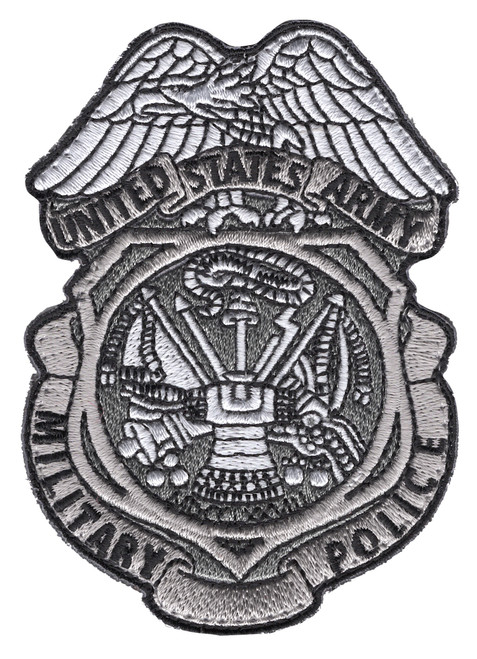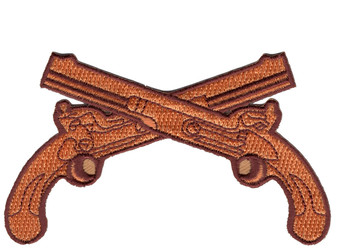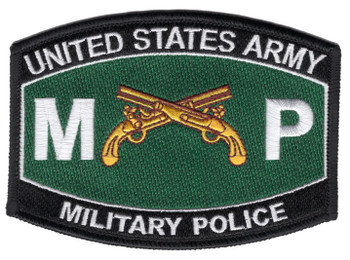Description
Military Police Badge US Army M.P. Hook And Loop Patch 2.5" x 3.5" Embroidered Patch with Iron-On Backing
Superior Materials: Made with premium polyester thread and durable twill fabric, ensuring long-lasting color and strength.
Advanced Embroidery Technology: Crafted using the most advanced embroidery machinery, guaranteeing intricate detail, sharp lines, and consistent quality every time.
Easy Iron-On Application: Features a heat-activated adhesive backing for quick, no-sew attachment. Simply position, iron, and press for a secure bond.
Versatile Use: Perfect for personalizing jackets, backpacks, uniforms, or any fabric surface that needs a touch of personality.
Durable and Washable: Designed to withstand everyday wear and occasional washing without fading or fraying.
Formations & Origins
The U.S. Army Military Police (MP) Corps traces its lineage back to the Revolutionary War, but the modern identity of the Corps took shape during World War II. The official Military Police Badge design — which is often featured in the M.P. patch — was finalized and approved on January 16, 1975. The design pulls elements from multiple historic MP units, particularly the 15th and 18th Military Police Brigades. The badge prominently features a shield — symbolizing defense and the long-standing tradition of policing — an eagle representing vigilance and strength, and an armament crest echoing the Department of the Army seal, marking the MP's role as both soldier and law enforcer.
Notable Commanders
Though not commonly known by individual commanders, the Military Police Corps has been shaped by many influential leaders. From generals at the top of the Provost Marshal General’s office to company-grade officers commanding MP platoons in combat zones, each has contributed to refining doctrine, elevating standards, and modernizing training. Perhaps most notably, General John J. Pershing played a key role in recognizing the need for dedicated military police in large-scale operations during World War I, setting the stage for the Corps’ permanent place in the Army.
Major Campaigns/Operations
Military Police have deployed to every major theater where the U.S. Army has set foot — from the hedgerows of Normandy to the sands of Iraq. During World War II, MPs directed traffic through contested roads, guarded prisoners of war, and enforced order in occupied zones. In Vietnam, they patrolled volatile urban centers and protected vital infrastructure. In Operations Desert Storm, Iraqi Freedom, and Enduring Freedom, MPs took on expanded roles — convoy escort, detention operations, and even direct combat in asymmetric warfare environments. Wherever the Army goes, the MPs are close behind, often first in and last out.
Specialized Role/Equipment
The M.P. patch signifies more than just a badge — it represents the Army’s law enforcement professionals. Military Police soldiers are trained to perform in dual capacities: enforcing the Uniform Code of Military Justice and executing battlefield tasks like route security, detainee operations, and area defense. Their toolkit includes standard sidearms, patrol vehicles, riot gear, and increasingly, high-tech surveillance and forensic tools. From K9 handlers to CID agents, MPs embody both the discipline of a soldier and the precision of a peace officer.
Acts of Heroism
The Military Police Corps is filled with stories of quiet bravery. In Iraq, MPs frequently led convoys through IED-ridden highways, acting as the tip of the spear for logistics and maneuver elements. One well-documented example of MP heroism comes from Specialist Hilda Clayton, an Army combat photographer attached to an MP unit, who died capturing the moment of a mortar explosion — her work and sacrifice serving as a powerful reminder of the risks MPs face daily. There are countless other stories — MPs pulling comrades from burning vehicles, defending bases under siege, or standing their ground during prison riots. Their heroism is often uncelebrated, but no less real.
Legacy & Notable Achievements
The Military Police Corps' legacy is one of discipline, courage, and flexibility. Its motto, “Assist, Protect, Defend,” reflects its broad mandate — from helping civilians during natural disasters to detaining enemy combatants under Geneva protocols. The establishment of the U.S. Army Military Police School at Fort Leonard Wood has elevated the Corps' standards and global reach. Today, MPs are not just enforcing law — they're writing doctrine, shaping strategy, and leading at every level of command.
The Military Police Badge, as worn in the M.P. patch, represents a legacy built on trust, responsibility, and grit. It’s not just worn — it’s earned through action, accountability, and an unyielding commitment to protect the force from within.






